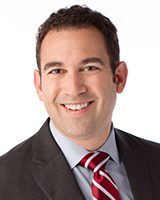Kaiser study shows new program cuts stroke treatment time in half


WALNUT CREEK, Calif. (KGO) -- If you're having a stroke, time is of the essence -- and a study just released by Kaiser Permanente shows a new program in Kaiser hospitals is cutting the time to get treatment nearly in half.
"I was watching TV," recalled Bob Wilms, who's 69 years old. "Watching the 49er game -- which is enough to give anybody a stroke."
Wilms hasn't lost his sense of humor, but he almost lost so much more.
"I kind of dozed off in my easy chair, my recliner, and when I woke up, everything (I could see) was double," he said. "I started feeling a little bit of numbness in my face."
Wilms said he knew in that moment that he was having a stroke. He called for his wife, who drove him to the Kaiser hospital a few miles away.
"They immediately came with me to the car, got him in a wheelchair," Vickie Wilms said.
In the hospital waiting room, she said her husband was trying to stay conscious as no fewer than ten staff members surrounded him. On a rolling cart with a screen and a large robotic camera, Bob Wilms came face to face with Dr. Kevin Sawchuk.
"It was very clear that this was a stroke in the brain stem, where all of the nerves are packed very tightly together," Sawchuk said.
He made the diagnosis from an office miles away in Walnut Creek using the wireless "stroke cart" that's now in every Kaiser emergency room in Northern California.
"The camera is extremely powerful, and so from the foot of the bed, I can actually focus in on one eye if necessary," he said.
The carts are part of a Kaiser program called Stroke Express.
"It allows us to bring the specialist immediately to the bedside as the patient arrives," said Dr. Vivek Rao, who oversees Kaiser's Comprehensive Stroke Center at its Redwood City hospital.
The Stroke Express process actually begins with an alert that's called in from the ambulance, Rao said. When the patient arrives, the diagnosis happens in the hallway, just inside the ambulance bay doors.
"For that particular moment, we consider that patient the sickest patient in the emergency department," said emergency physician Sunil Bhopale.
Diagnosis can take less than five minutes, as it did in Wilms' case.
"The next thing I knew is they were racing hihm up on the gurney to have a cat scan taken," his wife said.
During the scan, the on-site pharmacy begins mixing a dose of the clot-busting drug TPA. If the scan determines it's safe, it's administered right then and there, through an IV tube that was already inserted during the ambulance ride or diagnosis.
"We know that when we give TPA faster, the outcomes are better," said Alexander Flint, who administered a study on the new stroke program at Kaiser's Redwood City hospital.
That study, done across all of Kaiser's 21 Northern California hospitals, shows Stroke Express cut down the time before administering TPA by 20 minutes -- nearly in half.
"It could be the difference between somebody being able to enjoy Christmas with their grandchildren and someone that their grandchildren might have to go and visit... in a nursing home," Sawchuk said.
For Bob Wilms, the drug began working within ten minutes.
"I would've gotten back in my car and gone home if they'd let me," he said.
Kaiser's research team hopes publishing its study on Stroke Express helps other hospitals reduce stroke treatment times. But Bob Wilms says now, he's more focused on reducing his stroke count -- on the golf course. His wife got him a new set of clubs for his birthday.
"I'm just learning how to use 'em," he said. "But it's a good thing."
Click here for more health stories.






